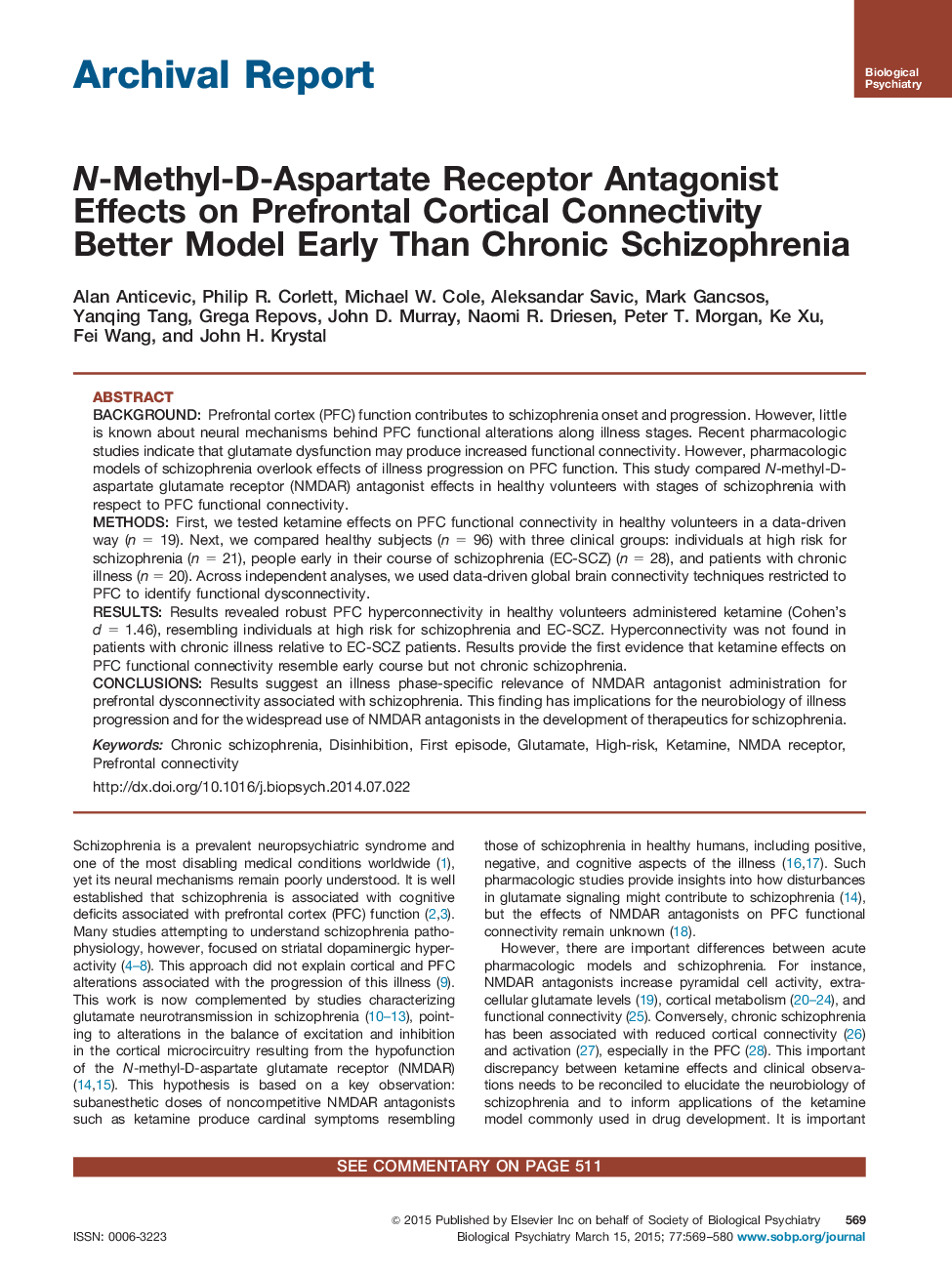| کد مقاله | کد نشریه | سال انتشار | مقاله انگلیسی | نسخه تمام متن |
|---|---|---|---|---|
| 4177387 | 1276418 | 2015 | 12 صفحه PDF | دانلود رایگان |

BackgroundPrefrontal cortex (PFC) function contributes to schizophrenia onset and progression. However, little is known about neural mechanisms behind PFC functional alterations along illness stages. Recent pharmacologic studies indicate that glutamate dysfunction may produce increased functional connectivity. However, pharmacologic models of schizophrenia overlook effects of illness progression on PFC function. This study compared N-methyl-D-aspartate glutamate receptor (NMDAR) antagonist effects in healthy volunteers with stages of schizophrenia with respect to PFC functional connectivity.MethodsFirst, we tested ketamine effects on PFC functional connectivity in healthy volunteers in a data-driven way (n = 19). Next, we compared healthy subjects (n = 96) with three clinical groups: individuals at high risk for schizophrenia (n = 21), people early in their course of schizophrenia (EC-SCZ) (n = 28), and patients with chronic illness (n = 20). Across independent analyses, we used data-driven global brain connectivity techniques restricted to PFC to identify functional dysconnectivity.ResultsResults revealed robust PFC hyperconnectivity in healthy volunteers administered ketamine (Cohen’s d = 1.46), resembling individuals at high risk for schizophrenia and EC-SCZ. Hyperconnectivity was not found in patients with chronic illness relative to EC-SCZ patients. Results provide the first evidence that ketamine effects on PFC functional connectivity resemble early course but not chronic schizophrenia.ConclusionsResults suggest an illness phase-specific relevance of NMDAR antagonist administration for prefrontal dysconnectivity associated with schizophrenia. This finding has implications for the neurobiology of illness progression and for the widespread use of NMDAR antagonists in the development of therapeutics for schizophrenia.
Journal: Biological Psychiatry - Volume 77, Issue 6, 15 March 2015, Pages 569–580